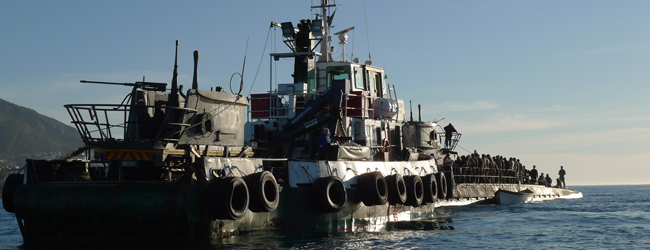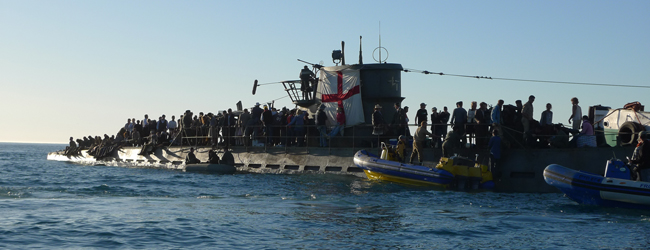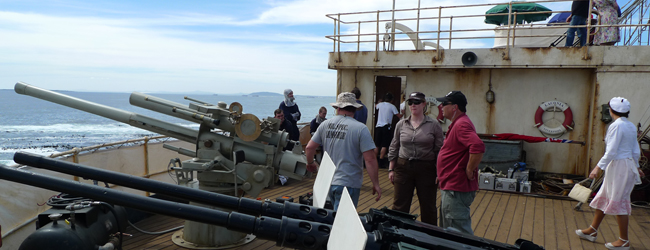Sinking of the Laconia films on location in Cape Town
World War II TV drama The Sinking of the Laconia was filmed entirely in Cape Town. The programme tells the true story of a German U-boat that sank the eponymous vessel off the West African coast in 1942. The U-boat captain decided to defy his subsequent orders and rescue the civilians and POWs who spilled into the sea.
A UK-Germany co-production, the project considered filming the ocean scenes in Malta and using studios in Berlin, but ultimately practicality won the day. Johnathan Young, an Executive Producer, said:
“The Atlantic swell [in South Africa] worked better for the project than the Mediterranean and there were the unappealing practical considerations of splitting the production into two units for Maltese and Berlin shoots. Splitting everything like that would’ve lost us our weather cover too.”
Ocean scenes were filmed in the open water of Granger Bay and in a tidal pool in Strandfontein. Marco S. le Roux, of Two Oceans Production in South Africa, said:
“The use of a tidal pool along the coast gave us the opportunity to do a lot of the stunt and action scenes in a controlled environment without having the costs of filming in a water stage at a studio. For the open seas we used Granger Bay that is relatively sheltered from wind and therefore also protected from strong currents and tides. This bay with easy and close access for launching supply boats provided a save environment while being out at sea.”
Two U-boats were built for the shoot. One used for night shooting was made of wood and then a steel version was constructed on a flat float.
It had no engines or steering capabilities so was controlled using a tug boat and underwater towing cables. The decks of the Laconia were built on scaffolding in a car park overlooking the ocean, while the interiors were shot in a nearby warehouse.
Experienced divers monitored weather conditions to make sure it was safe to film on the open ocean on any given day. Le Roux said:
“The logistics of moving a crew, cast and background actors on some days of up to 300 people at sea, supplying food, water, toilet facilities, equipment, wardrobe, make up and so on to such a big group required very precise planning and up to 15 support boats in the water.”
Young concluded: “The South African crews were fantastic. There was only a minimum number of crew from the UK and Germany, so it felt more like a three-nation co-production.”
Related Posts
- Location Manager Michael John Meehan: Making water work on film
- Tom Hanks films piracy drama Captain Phillips in Malta and Virginia
- Ron Howard films the Canary Islands for historical drama In the Heart of the Sea
- Bonkers creates ocean-based boating comedy for Centraal Beheer Achmea
- Film de Liberte films canine swimmers in South Africa for Folksam insurance
- The Canyons – a filming survival guide
- Filming on location with international Producer Julia Weichinger
- Wefilm continues Heineken Dropped campaign filming in Cambodia
Related posts:
Comments
Not Logged in
You must be logged in to post a comment



There are 1 comments